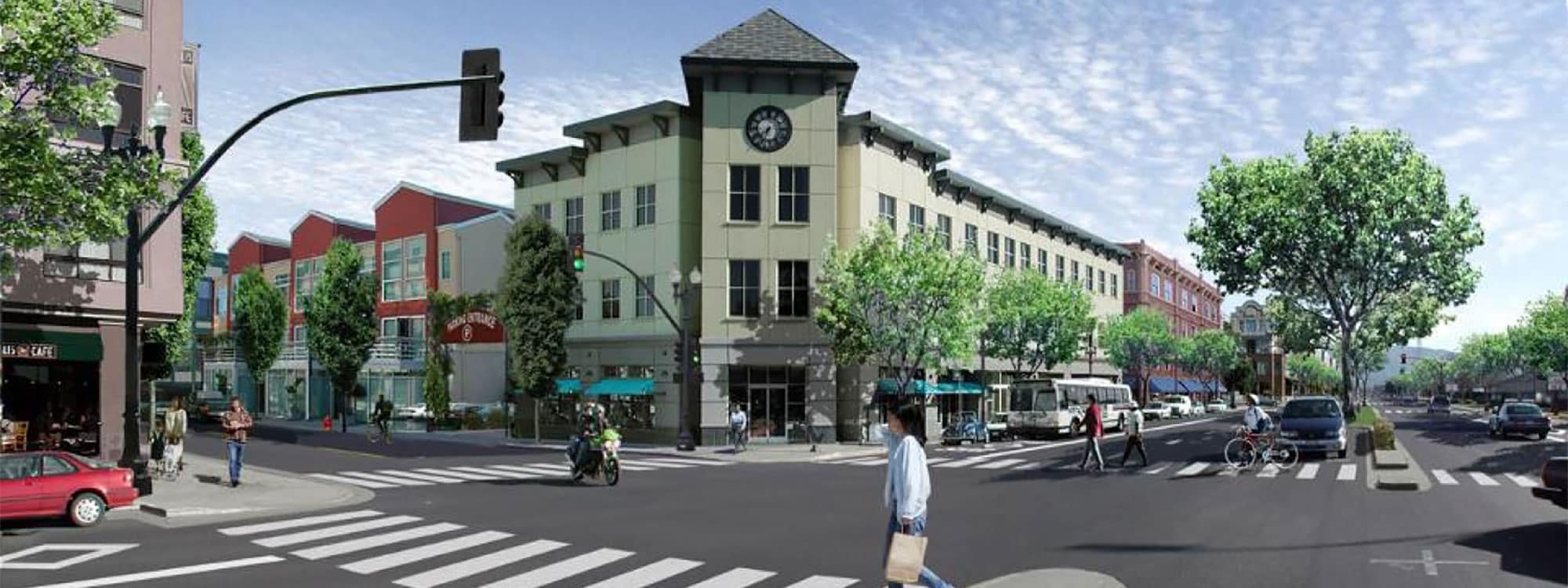Ever since San Jose’s leaders adopted the Envision San Jose 2040 General Plan, the talk has been about how to implement it. The primary way the City plans to accommodate growth over the next 30 years is by directing it into 70 urban villages throughout San Jose.
The very first urban villages were recently approved on November 19—a cluster of neighborhoods known as Five Wounds-Brookwood Terrace that are centered around a future BART station. The residents engaged in planning for these neighborhoods are trailblazers, leading the creation of plans in true grassroots fashion and in partnership with CommUniverCity.
Greenbelt Alliance has been deeply engaged in the planning for the West San Carlos and South Bascom urban villages. We have collected residents’ ideas and compiled them into a community platform. Here is a timeline of recent and coming attractions:
August 28, 2013 – The San Jose Planning Commission received an update on urban villages [PDF], as well as various plans in process now including Diridon Station, the Alameda, and South Bascom Avenue.
Check out the video about urban villages that Greenbelt Alliance produced for the City of San Jose.
September 23 and 30, 2013 – The second round of community workshops showed preliminary roadway designs and general land uses. The vision for these villages is for them to become great places with great streets that safely connect neighborhoods and have attractive public spaces that bring the community together. One proposed idea was to add cycle tracks along South Bascom. Other issues raised were the immediate need for parks and safe routes to schools like Lincoln and Del Mar High Schools and Luther Burbank Elementary.
With new homes breaking ground, the City wants this area to become a major job center. San Jose City College, Valley Medical Center, and eBay are located along South Bascom Avenue.
View all the meeting materials from the West San Carlos and South Bascom community workshops.
November 12, 2013 – The City held a study session for council members to discuss potential financing strategies needed for urban village implementation. Several council members spoke up for the need for an affordable housing strategy while Mayor Reed wondered about how to kick start urban villages in the absence of a redevelopment agency or master developer. This will be very tricky along streets like West San Carlos, where a strip mall has multiple landowners and where County pockets that need to be annexed into San Jose still exist.
An infrastructure financing toolkit was presented to the City Council. One tool included was “public development rights” (otherwise known as public Benefits zoning or value recapture)—when part of the added value generated from up-zoning land comes back to the community in the form of parks, affordable homes, public art, and other amenities. An example of value added from a zoning change is the Cheim Lumber site on West San Carlos Street (see slide 32 of the PDF).
While the City already collects development fees to pay for parks, sewers, and water connections, many other planned amenities have no dedicated funding source. Even park fees only pay for land and construction costs, not the operation and maintenance of a park. Opportunities do exist though, such as future One Bay Area Grant cycles, Bus Rapid Transit improvements, and the establishment of Business Improvement Districts.
November 19, 2013 – Four urban villages, collectively known as Five Wounds-Brookwood Terrace in the heart of San Jose’s Portuguese community, were unanimously approved by the San Jose City Council. Congratulations to the hundreds of residents who came together over several years to plan for more homes and jobs around transit. One cool element of this plan has already been put into action—a Rails to Trails project, the Five Wounds community is working to convert an abandoned railroad line into a pedestrian trail.
December 10, 2013 – San Jose is likely to vote on a Housing Impact Fee on this date, unless City Council grants a request to hold off for 90 days. A Housing Impact Fee is a fee charged to market-rate housing development to fund affordable housing programs. A priority for Greenbelt Alliance and housing advocates is ensuring that people can afford to live close to their jobs and that current renters are not pushed out of their homes as a result of rapidly rising rents. The only affordable housing requirement currently in place in San Jose is an inclusionary zoning policy on newly constructed, for-sale homes in former redevelopment areas, which does nothing to ease the pain of the crushing rental market.
A citywide Housing Impact Fee can begin to meet the need for more affordable homes in urban villages, which will only become thriving, interesting places if they are equitable too. It will be important to have a strong showing at this Council hearing. Contact Michele at mbeasley@greenbelt.org to learn how you can help.
January 2014 – The City plans to hold a third community workshop to present the final designs for the West San Carlos and South Bascom urban villages.
February 2014 – The San Jose Planning Commission and San Jose City Council will review the urban village plans.




